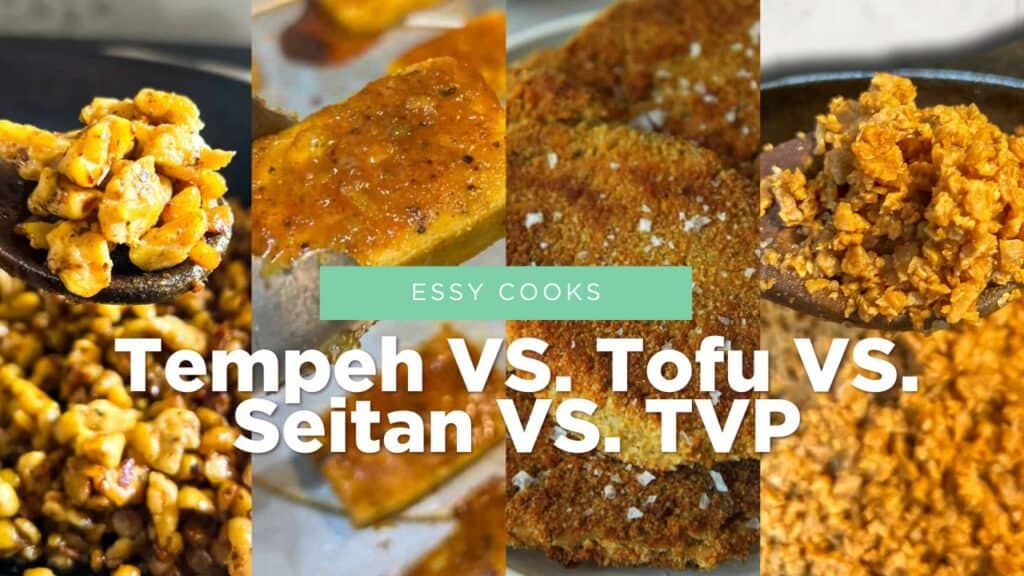Introduction: Why Veganize a Recipe?
Veganism is more than just a dietary choice; it’s a lifestyle that promotes health, sustainability, and compassion toward animals. But what if your favorite dish contains animal products? That’s where veganizing comes in! With a few tweaks and substitutions, you can transform any recipe into a vegan masterpiece, packed with flavor and nutrition.
What Does “Veganize” Mean?
Veganizing a recipe means transforming a traditional dish into a vegan-friendly version by removing all animal-derived ingredients like meat, dairy, eggs, and fish. In their place, plant-based ingredients are used, ensuring the dish is entirely cruelty-free and in line with a vegan diet.
Benefits of Veganizing Recipes
Veganizing a recipe has benefits that go beyond individual meals. Let’s take a look:
Health Benefits
By making a recipe vegan, you’re eliminating animal fats, which are high in cholesterol, and replacing them with healthier, plant-based fats like olive oil and coconut oil. Plant-based diets are linked to lower risks of heart disease, diabetes, and obesity.
Environmental Impact
Plant-based foods require fewer natural resources to produce compared to animal-based foods, making them more eco-friendly. Veganizing your recipes helps lower your carbon footprint and contributes to a healthier planet.

How to Veganize a Recipe: A Step-by-Step Guide
So, how do you actually veganize a recipe? It’s simpler than you think! Here’s a step-by-step guide:
Replacing Animal-Based Ingredients
Start by identifying the animal-based ingredients in your recipe and find plant-based alternatives:
- Meat: Replace with tofu, tempeh, seitan, black beans, chickpeas, or lentils.
- Dairy: Use plant-based milk like almond milk, soy milk, coconut milk, or oat milk.
- Eggs: Swap with chia seeds, flax seeds, or commercial egg replacers.
Incorporating Plant-Based Proteins
To make a vegan dish filling and nutritious, include plenty of plant-based proteins. Try using legumes (like black beans and lentils), tofu, tempeh, and seitan. For a meatier texture, use products like Beyond Meat or homemade veggie burgers.
Popular Substitutes for Animal-Based Ingredients
Let’s dive into some specific swaps for the most common animal-based ingredients.
Replacing Meat: Tofu, Tempeh, and Seitan
- Tofu: Bland on its own but absorbs flavors well. Best for stir-fries, curries, and baking.
- Tempeh: Firm and nutty, ideal for grilling or frying.
- Seitan: A chewy, meat-like texture that works well in sandwiches and stews.
Dairy-Free Milk Options
Almond milk, soy milk, and coconut milk are fantastic substitutes for cow’s milk in both savory and sweet dishes.
Egg Substitutes in Baking
Eggs are commonly used for binding and leavening. In vegan baking, substitute eggs with mashed bananas, applesauce, or a mixture of flax seeds and water.
Choosing the Right Vegan Protein
Choosing the right protein is crucial when veganizing a recipe. For example, tofu works best in Asian cuisine, while lentils are excellent in stews. Consider the texture of the original dish—are you replacing ground meat, chicken, or beef? Match the vegan protein to the texture you need.
Textures and Flavors of Vegan Proteins
- Tofu: Soft or firm, depending on your preference.
- Tempeh: Adds a nutty flavor.
- Seitan: Has a chewy texture, perfect for meat-like dishes.

Experimenting with Flavors and Spices
The key to a tasty vegan dish lies in how well you season it. Use herbs, spices, and marinades to bring out the best in your ingredients. Garlic, cumin, smoked paprika, and nutritional yeast are great choices for adding savory flavor.
Incorporating Vegetables and Fruits
Vegetables and fruits should be front and center in vegan cooking. Not only do they add flavor, but they also bring vibrant colors and essential nutrients to the dish. Try incorporating bell peppers, sweet potatoes, shiitake mushrooms, and bok choy into your recipes.
Getting Creative with Textures
Different cooking techniques can help you achieve the desired texture in vegan meals. For example, pressing tofu before cooking makes it crispier, while roasting vegetables adds depth and crunch. Consider methods like grilling, sautéing, and baking to vary the texture.
Be Open to New Ingredients
Vegan cooking can introduce you to a whole new world of ingredients like chickpea flour, nutritional yeast, silken tofu, and wild rice. Don’t be afraid to experiment!
Essential Tips for Veganizing Specific Dishes
Veganizing Soups and Stews
Replace the meat in soups with lentils, chickpeas, or beans. Use vegetable broth instead of chicken or beef stock.
Veganizing Desserts and Baked Goods
Use vegan butter, almond milk, and plant-based oils like coconut oil for rich, creamy textures. Substitutes like applesauce or mashed bananas work great in place of eggs in cakes and cookies.
Using Nutritional Yeast in Vegan Cooking
Nutritional yeast is a game-changer for adding a cheesy, savory flavor to vegan dishes. It’s perfect in vegan cheeses, sauces, and even sprinkled on top of pasta.
The Importance of Oils in Vegan Cooking
Oils like olive oil, coconut oil, and vegetable oil play a crucial role in vegan cooking for frying, sautéing, and adding moisture to baked goods.
Exploring Easy Vegan Recipes for Beginners
For those just starting out on their plant-based journey, easy vegan recipes are a great way to dive into the vegan lifestyle without feeling overwhelmed. Whether it’s your first time trying a vegan dinner recipe or you’re just looking for new vegan meals to add to your repertoire, there are countless delicious vegan recipes that require minimal effort and deliver maximum flavor. If you’re transitioning from a non-vegan recipe, these meals are a great option to ease into the process.
One of the best vegan recipes for beginners is an easy vegan chilli recipe. Packed with veggies, beans, and spices, it’s filling, flavorful, and can easily become a regular rotation in your meal plan. The good news is that this healthy vegan chilli recipe packs a lot of protein without needing costly meat replacements or strange ingredients, making it a great way to stick to a plant-based diet. For a more filling supper, serve it alongside jacket potatoes or a side of brown rice or white rice.
Getting the Most Out of Your Food Processor
A food processor is a kitchen essential for creating delicious vegan recipes that are quick, efficient, and hassle-free. It’s especially useful for easy vegan meals where you don’t want to spend too much time chopping or preparing ingredients. This tool is perfect for blending sauces, chopping fresh veggies, and even making your own plant-based cheeses or nut butters like peanut butter. If you’ve never used a food processor, now’s the perfect time to try, especially for recipes that call for multiple processed ingredients like refried beans or crispy tofu.
For example, you can use it to make a creamy texture for vegan dressings by blending lime juice, apple cider vinegar, and neutral oils like canola oil or sunflower seeds for added richness.
Staple Ingredients for Vegan Recipes
When it comes to vegan cooking, having a well-stocked pantry is crucial. Main ingredients like soy sauce, maple syrup, and rice vinegar are versatile and can add delicious flavors to a variety of dishes. Pairing soy sauce with lemon juice or lime juice in a stir-fry or marinade can really bring out such great depth of flavor in your meals. Adding red onions and fresh cilantro to vegan tacos or salads is a great way to enhance both flavor and nutrition.
You’ll also want to keep tablespoons of water handy to thin out sauces or help cook down certain vegetables. A sheet pan can also be a lifesaver for making easy vegan meals like roasted veggies or crispy tofu for an all-in-one meal that the whole family will love.
Tips for Recreating Non-Vegan Recipes
If you’re recreating a favorite non-vegan recipe, one of the most important parts is finding great substitutes for traditional animal-based ingredients. For example, swap out egg whites with flaxseed or chia eggs in baking, and replace dairy milk with almond or oat milk for a creamy texture in sauces or baked goods. White sugar can also be swapped with maple syrup or coconut sugar in many desserts.
A great recipe to try is a vegan chicken recipe using seitan or tofu, marinated in soy sauce, lime juice, and fresh cilantro. This not only mimics the texture of chicken but offers delicious ways to create familiar flavors. A lot of meat dishes can be made into vegan dinner recipes with a few substitutions. There are simple swaps like if the recipe calls for butter, simply use vegan butter. The most important part is tasting as you go.
For a quick and easy curry, use pantry staples like coconut milk, curry powder, and fresh veggies like red bell peppers or carrots. Pair with brown rice or jacket potatoes for a hearty and comforting meal. The next time you’re craving a filling, plant-based dish, you can feel confident creating it without needing strange ingredients.
Creating Vegan Meals for the Whole Family
Vegan meals don’t have to be complicated or require costly meat replacements. You can create lazy vegan recipes with minimal prep that still deliver on flavor. Think simple dinners like refried beans and crispy tofu tacos, or filling suppers like healthy vegan chilli with a side of brown rice. These dishes are sure to please the whole family, whether they follow a plant-based diet or not.
For a second time making a vegan dish, tweak the original recipe by adding more spices or swapping in plant-based cheeses for a creamier texture. You’ll soon find yourself experimenting with new recipes and adding them to your regular rotation.
By incorporating these tips and ingredients into your cooking, you’ll be able to easily transform traditional meals into delicious vegan recipes that work for any occasion. Whether it’s the first time trying a new vegan dish or recreating a beloved classic, you can confidently embrace the versatility and creativity of vegan cooking.
Common Mistakes When Veganizing a Recipe and How to Avoid Them
- Not using enough seasoning: Vegan dishes need plenty of spices and herbs to bring out the best flavors. Properly seasoning your dishes makes such a difference and this isn’t just for the spicy food lovers. Making sure your dish has enough salt and umami will make the world of difference.
- Ignoring texture: Use techniques like pressing tofu or blending beans to create the right texture.
- Overcomplicating: Keep it simple by using familiar ingredients and methods before trying something new.
The Importance of Umami in Vegan Dishes
One of the key elements that can take your vegan dishes to the next level is the incorporation of umami – the fifth taste, often described as savory or meaty. While meat and dairy naturally contain a lot of umami, there are plenty of plant-based great substitutes that can deliver that same such great depth of flavour in vegan cooking. Umami is essential for creating rich, satisfying dishes, particularly in vegan recipes where traditional sources of savory taste aren’t used.
Vegan Umami Ingredients
There are plenty of important ingredients you can find in grocery stores that contribute to the umami flavor in plant-based meals. For instance, soy sauce and tamari are staples that add an instant hit of umami to stir-fries, sauces, and marinades. Mushrooms, especially shiitake mushrooms, are also a great place to start if you’re looking to build a savory base in your dish. When cooked, these mushrooms release an earthy, umami-packed flavor that enhances any vegan recipe.
Other umami-packed ingredients include miso, nutritional yeast, and tomato paste. Nutritional yeast, in particular, is a fantastic ingredient for adding umami and is a great substitute for cheese in vegan cooking due to its naturally cheesy, nutty flavor. The last time you tried to veganize a cheesy dish, you might have missed that rich taste, but adding nutritional yeast will get you closer to that umami sensation.
Maximizing Umami Flavor in Vegan Cooking
To really bring out umami in your vegan dishes, focus on cooking techniques that enhance these flavors. For example, roasted vegetables like tomatoes, mushrooms, and bell peppers release deeper, more intense flavors when cooked at room temperature or higher. These can stand on their own right as flavorful bases for soups, stews, or casseroles. Pairing roasted vegetables with soy sauce, miso, or nutritional yeast can give your dish that perfect savory kick.
Another tip is to use fermented ingredients like miso or tamari in moderation. They pack so much umami that even a small amount can make a significant impact. The great substitute of nutritional yeast in dishes like vegan pasta sauces or tofu scrambles can also enhance savory richness.
Incorporating umami into your cooking is an important way to ensure that your vegan meals are hearty and satisfying. The next time you’re at the grocery store, look out for these umami-rich ingredients—they’ll elevate your vegan cooking to new heights!
| Umami Ingredient | When to Use It | Description |
|---|---|---|
| Soy Sauce / Tamari | Stir-fries, marinades, soups | Adds a rich, salty, and savory flavor. Use sparingly to boost umami in Asian-inspired and savory dishes. |
| Miso Paste | Soups, sauces, dressings | Fermented soybean paste with a deep, earthy umami flavor. Great for adding depth to broths and creamy sauces. |
| Nutritional Yeast | Vegan cheese sauces, tofu scrambles, pasta dishes | Cheese-like, nutty flavor that enhances umami in creamy or cheesy vegan dishes. |
| Mushrooms (Shiitake, etc.) | Stir-fries, soups, casseroles, pasta | Mushrooms, especially shiitake, release intense savory flavors when cooked. Roast or sauté to deepen flavor. |
| Tomato Paste | Soups, stews, sauces | Concentrated tomato flavor that adds a strong umami boost to any dish, particularly tomato-based recipes. |
| Seaweed (Kombu, Nori) | Broths, soups, sushi, salads | Adds ocean-like, salty umami flavors. Perfect for vegan broths and enhancing the depth of stews. |
| Fermented Soy (Tempeh, etc.) | Stir-fries, sandwiches, salads | Fermented soy products like tempeh add a nutty, savory taste, perfect for replacing meat textures. |
| Sundried Tomatoes | Salads, pastas, pizzas | Intense, tangy, and savory flavor that enhances umami in Mediterranean-inspired dishes. |
| Mushroom Powder | Sauces, soups, risottos, seasoning blends | Concentrated mushroom flavor that can be sprinkled into dishes to instantly add a rich umami taste. |
| Smoked Paprika | BBQ dishes, stews, tofu marinades | Adds a smoky, savory flavor with hints of sweetness, ideal for recreating smoky meat flavors in vegan dishes. |
Conclusion: Embrace the Vegan Cooking Journey
Veganizing recipes may seem daunting at first, but with the right approach, it can be fun and rewarding. By experimenting with new ingredients, playing with textures, and being creative with flavors, you’ll find it’s easy to transform your favorite dishes into vegan delights. Enjoy the process and don’t be afraid to try new things!ganize any recipe and enjoy delicious plant-based meals.
How To Choose The Correct Vegan Protein
When selecting your protein substitute this can really depend on the dish. I find that tofu has a fairly bland flavor so it can take on the flavor of whatever you marinate it in. Other proteins like chickpeas can be a great addition to vegan salads and Indian dishes. Rice and beans can also be used in your vegan dishes.
- Consider the texture of the meat you are replacing. Tofu and tempeh have a firm, chewy texture that works well in dishes like stir-fries, while seitan has a chewy, meat-like texture that works well in dishes like stews and sandwiches.
- Think about the flavor of the meat and try to match it with a vegan protein that has a similar flavor. For example, if you are replacing chicken in a recipe, you may want to use a protein with a mild flavor like tofu.
- Use seasonings and marinades to add flavor to your plant-based protein. This can help to enhance the flavor and make it more similar to the meat you are replacing.
- Don’t be afraid to get creative and try new vegan proteins! There are many options available, so experiment and see which ones you like best.
There are a lot of new companies that are making “meat” substitutes which has made vegan cooking so much easier. Lentils can make great meatball substitutes but also are awesome to replace ground beef recipes. Reach out to Spicy Vegan Food if there are any recipes you would like to see veganized!




